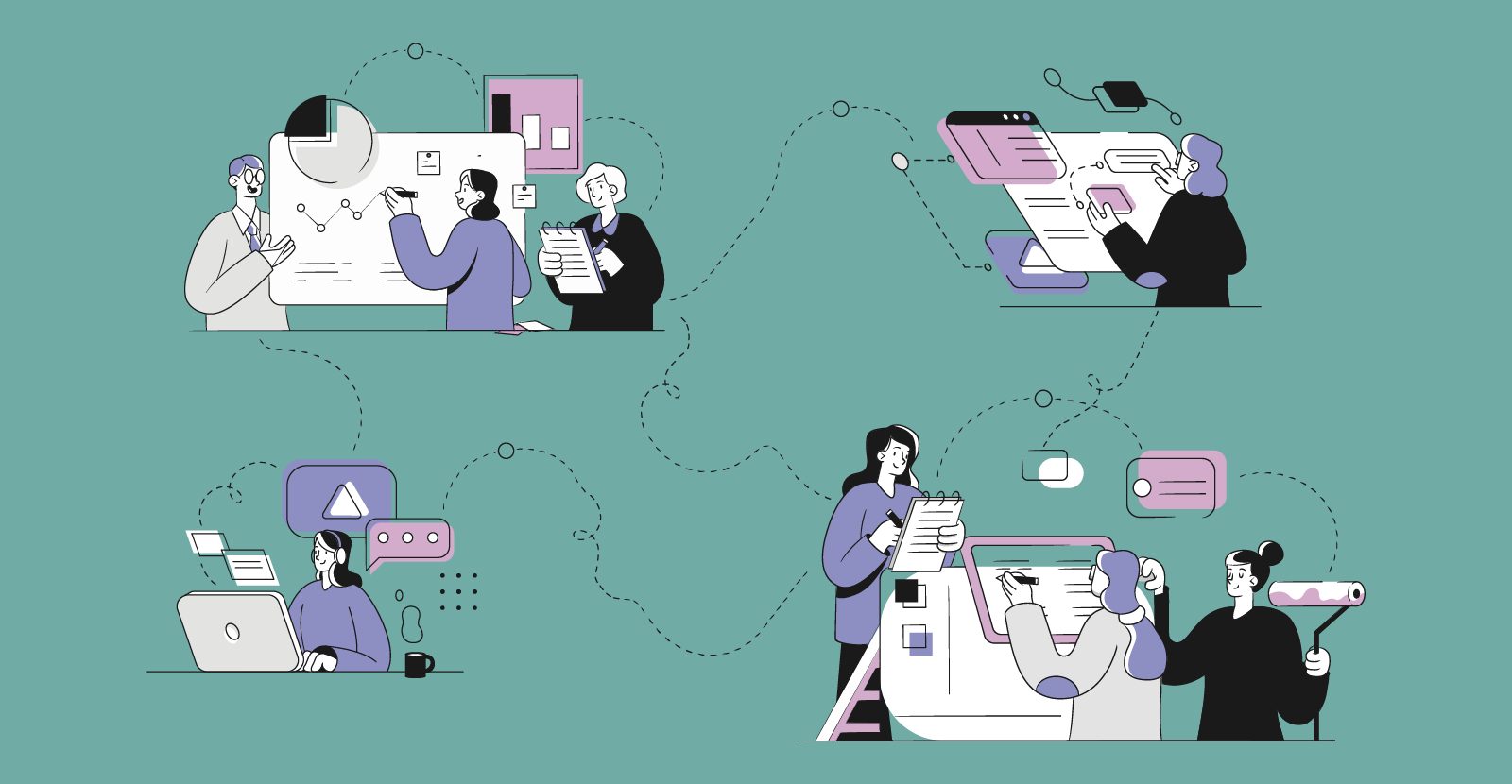Get in touch
How do I achieve a connected service? Do connected service design

Complex services require a special kind of finesse when it comes to making changes. It's not like starting up something new: you don't get an opportunity for do-overs if thousands (or millions!) are relying on your service, and there are legions of people involved in delivering the product or solution.
How do I create a connected service?
If you’re looking to make your service more interconnected, consistent and streamlined for customers however they may experience it, it’s important to keep in mind that it won’t be an overnight process; rather, it will involve evolving over time. To create a joined-up experience for your customers, you’ll need to break down organisational barriers and join forces. By working collaboratively, larger sections of the service can be re-imagined, developed and deployed - far beyond what one team or project alone could create!
Everyday services provide a fascinating opportunity for designing and collaborating. Every person deserves access to services that are thoughtfully created and crafted. However, it can be challenging to create these connected experiences in large organisations where services and experiences are shared across different departments. That’s where service design comes in!
What is service design?
Service design is the process of designing and improving services to meet the needs and expectations of users or customers. It is an interdisciplinary approach that combines elements of design thinking, user experience (UX) design, and business strategy.
It has become an increasingly prominent business capability in the past few decades - in fact, Engine helped invent the tools and approaches for designing and redesigning services that operate at scale, and have even written a book about it! Nowadays, organisations everywhere are recognising its value and are taking steps to integrate it into their everyday ways of working. But while some have already succeeded at this shift, not all organisations find it easy.
Leaders know that customer-centricity and service design are valuable, yet they may need help understanding the process and implications of designing 'services' instead of individual interactions and touchpoints. Done properly, this approach can streamline processes and give your organisation a competitive edge that focuses on providing quality interactions with every customer.
How to do service design well
Not sure where to start? Here are 7 pointers from our experts…
1. Define a customer experience vision
Clearly articulate the service and experience your organisation aims to deliver, aligned with the brand promise. Service design should focus on realising this vision.
2. Adopt a user centred approach
Design services that meet the needs and expectations of users. Understanding user perspectives, behaviours, and emotions is crucial, with users at the heart of the design and technology as an enabler.
3. Embrace collaboration
Service design is a collaborative process involving stakeholders from various disciplines. Collaborating with diverse stakeholders can generate a broader range of ideas, perspectives, and ensure alignment, making change management easier.
4. Use iteration
Emphasise iterative design, which involves continuous testing and refinement to improve the service's design and functionality in line with evolving needs and customer feedback, even after the service goes live.
5. Take a holistic view
Service design should encompass the entire service ecosystem, including people, processes, and technology. This approach can identify potential areas of improvement and provide a comprehensive view of the service.
6. Communicate clearly
Effective service design requires clear communication with stakeholders to ensure everyone is aligned on the goals and objectives of the service. Clear communication can also help manage expectations and ensure the service is delivered as intended.
7. Evaluate and monitor
Regular evaluation and monitoring of service design are critical to ensure that the service meets user needs and achieves desired outcomes.
Keen to learn more?
Discover how to use design thinking and tools from the experts on business transformation - 'Customer-Driven Transformation' by Engine’s founders! This innovative book will give you all of the insight necessary to inspire, lead and manage change within your organisation.
At Engine, we know how powerful the right connection can be between products, people and places. If you want to design your services with this in mind - let's chat! Click below to book a meeting with a service design expert.
To learn more about Connected Service Design, click here.
What are fully connected services and why are they valuable?
A fully connected service prioritises customer experience by consistently and seamlessly...Creating connected customer experiences: Why Engine is the best choice for your organisation
Creating a seamless customer experience across all channels and touchpoints is crucial for...How to choose the right service design consultancy for your organisation
In today's highly competitive business landscape, customer experience has become a critical...Book time with a service design expert.
Discover the transformative power of service design and unlock the full potential of your business. Get in touch with our service design experts today and start improving or innovating your services and customer experience.
